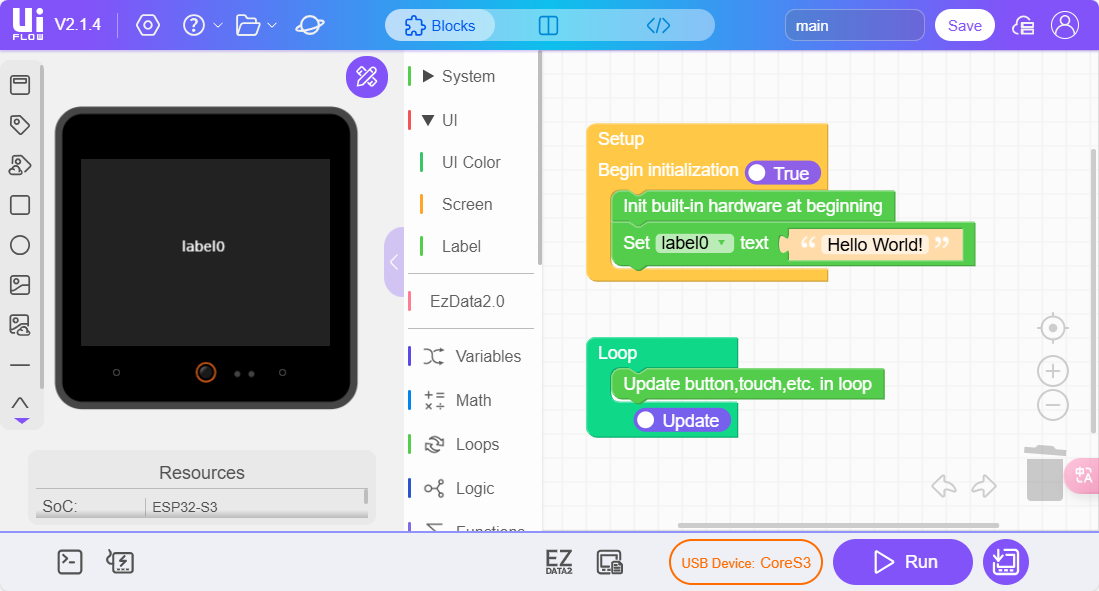Quick Start Guide for UiFlow2 Web IDE

1.Getting Started
Before programming with UIFlow, there are a few preparation steps:
1.Install the M5Burner firmware burning tool. 2.Use M5Burner to burn the firmware for the corresponding device, log in to your account, and configure Wi-Fi connection for the device. 3.Open the UIFlow Web IDE 2.0 version, select the appropriate online device option, and click to connect. 4.Drag and drop blocks to edit the program, and click the Run button to debug the program.
- Additional Information:
- M5Burner is a unified firmware burning tool introduced by M5Stack. It allows users to easily burn UIFlow firmware and write configuration information such as Wi-Fi settings during the burning process.
2.Installing M5Burner
Please click on the appropriate button below based on your operating system to download the corresponding M5Burner firmware burning tool. Unzip and open the application.
| Software Version | Download Link |
|---|---|
| M5Burner_Windows | Download |
| M5Burner_MacOS | Download |
| M5Burner_Linux | Download |
3.M5Stack Community Account
The M5Stack Community is a professional communication platform tailored by the M5Stack team for enthusiasts of M5Stack devices and IoT developers.
Register an M5Stack Community account, which can also be used to log in to M5Burner and UiFlow2 / UiFlow1. You can also access the login page in M5Burner software, UiFlow2 / 1.0 software, or the web version and click the "Register" button to register for an M5Stack Community account.

After using M5Burner to burn firmware information, the device's unique MAC address will be bound to the M5Stack Community account. When a user logs into UiFlow1/2.0 with their M5Stack Community account, they can view all the devices currently bound to their account by clicking the device management button.
If a user wishes to unbind a device from their account and rebind it again:
- 1.Re-burn the UiFlow1/2.0 firmware (this will unbind the device from the original device owner and remove any existing account bindings. If the device is still bound, the user will need to contact the original device owner to unbind it).
- 2.View the device's MAC address and bind the device through the UiFlow1/2.0 device interface by filling in the MAC address (this method can be used if the original device owner is the current user).
4.Firmware Burning & Running Programs
Refer to the programming tutorial for the corresponding product and upload the program.
